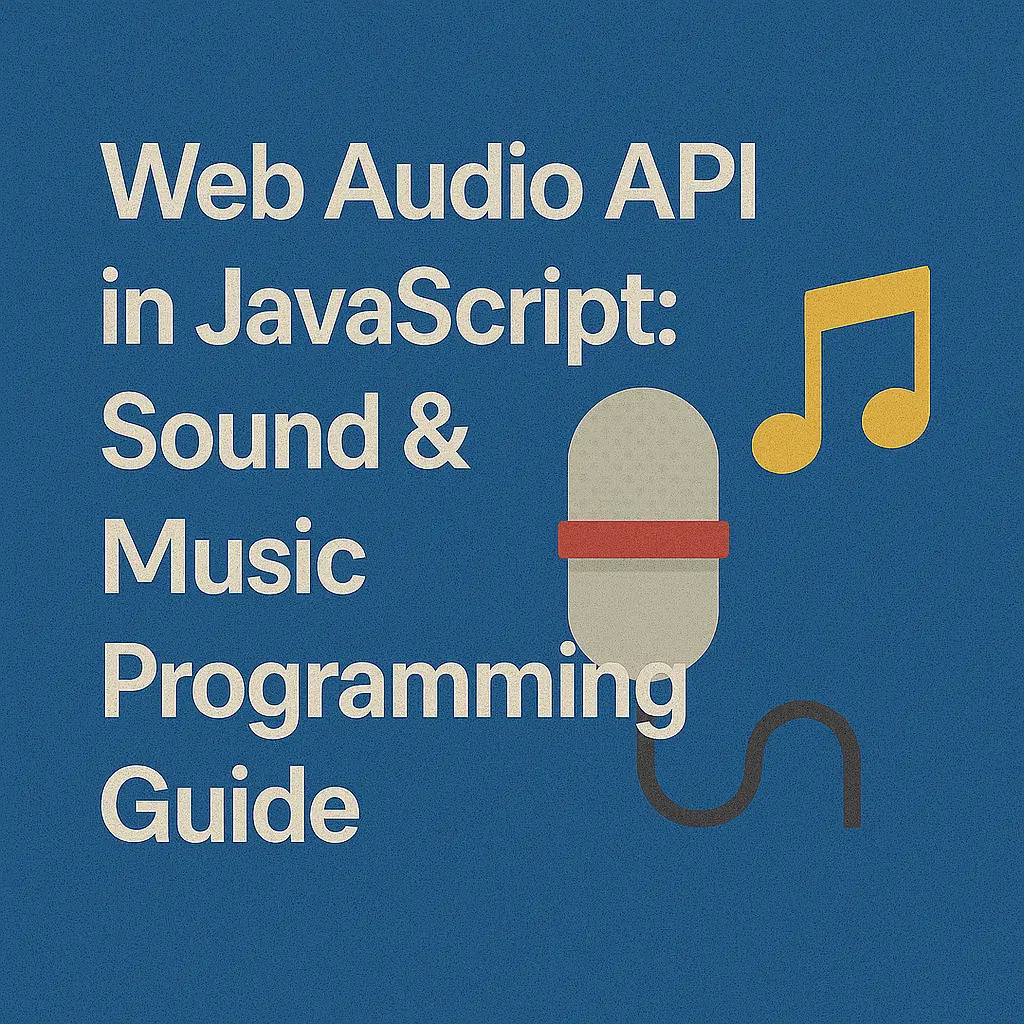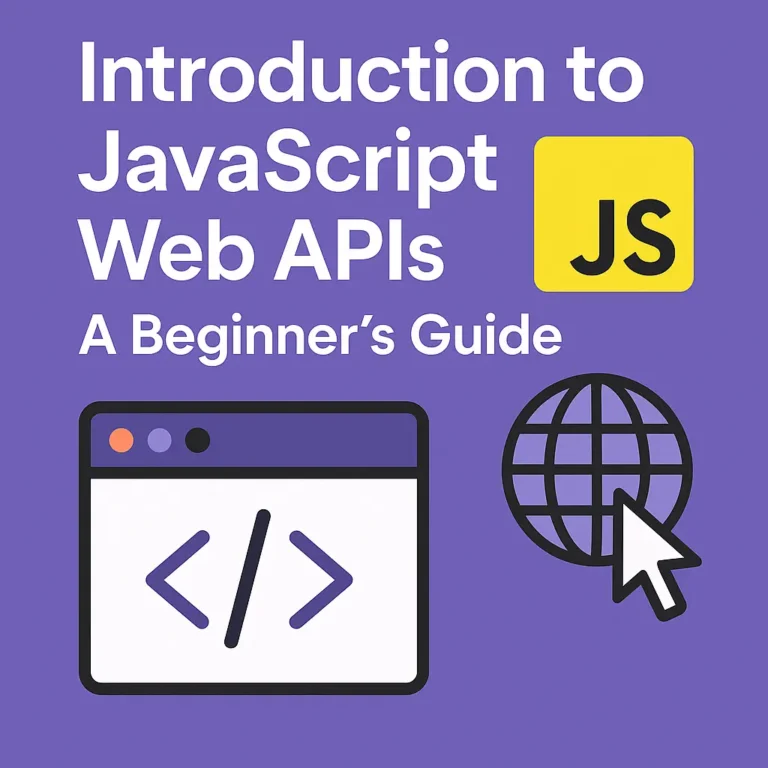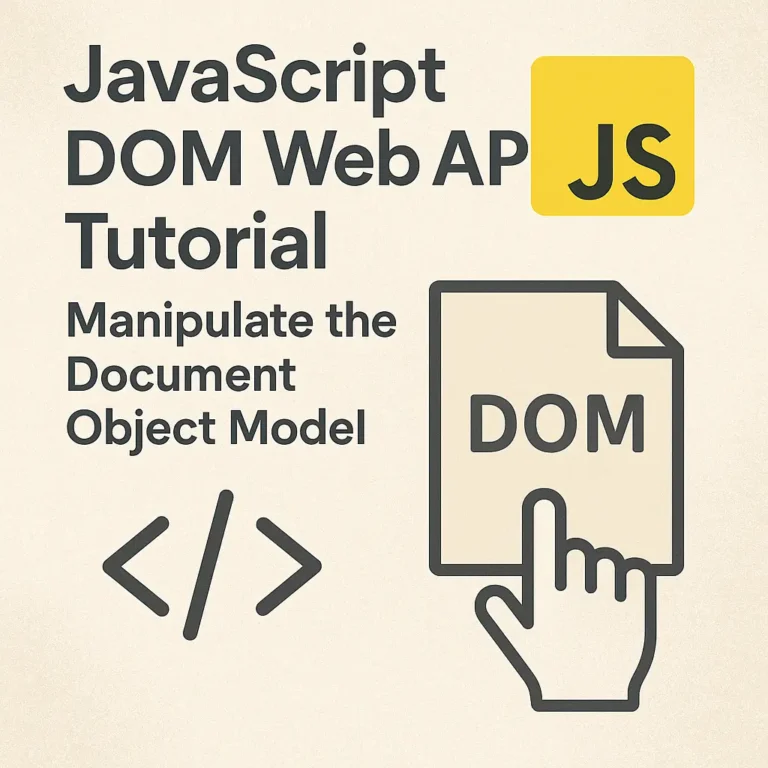Introduction
The world of web development continually evolves, offering innovative ways to engage users. One such advancement is the JavaScript Web Audio API, a powerful toolset that enables developers to integrate audio seamlessly into web applications. From playing audio files to manipulating raw audio data and crafting mesmerizing audio effects, the Web Audio API opens up a realm of possibilities for creating immersive user experiences. In this article, we’ll explore the fundamentals of the Web Audio API and demonstrate how to harness its capabilities through practical examples.
Playing Audio Files
One of the fundamental tasks of any audio application is playing audio files. With the Web Audio API, this task becomes straightforward and customizable. Let’s start by loading and playing an audio file using JavaScript:
// Create an audio context
const audioContext = new AudioContext();
// Load audio file
fetch('audio-file.mp3')
.then(response => response.arrayBuffer())
.then(buffer => audioContext.decodeAudioData(buffer))
.then(decodedData => {
// Create a source node
const source = audioContext.createBufferSource();
source.buffer = decodedData;
// Connect the source node to the audio context output
source.connect(audioContext.destination);
// Play the audio
source.start();
})
.catch(error => console.error('Error loading audio file:', error));
In this example, we first create an AudioContext, which represents the audio processing graph. We then fetch an audio file and decode its data using the decodeAudioData method. Once decoded, we create a BufferSourceNode and set its buffer to the decoded audio data. Finally, we connect the source node to the destination node of the audio context and start playing the audio.
Manipulating Audio Data
The Web Audio API provides powerful tools for manipulating audio data in real-time. Let’s explore how we can apply basic manipulation techniques such as changing playback rate and volume:
// Manipulating playback rate and volume
const audioElement = new Audio('audio-file.mp3');
const audioSource = audioContext.createMediaElementSource(audioElement);
const gainNode = audioContext.createGain();
const playbackRate = 1.5;
audioSource.connect(gainNode);
gainNode.connect(audioContext.destination);
// Adjust playback rate and volume
audioElement.playbackRate = playbackRate;
gainNode.gain.value = 0.5; // Adjust volume (0 to 1)
audioElement.play();
In this example, we first create an Audio element and load an audio file. We then create a MediaElementSourceNode from the audio element and connect it to a GainNode, which allows us to adjust the volume. We also manipulate the playbackRate property of the audio element to change the playback speed.
Creating Audio Effects
Creating audio effects is where the Web Audio API truly shines. Let’s implement a simple audio effect—reverb:
// Creating reverb effect
function createReverb(audioContext) {
const convolver = audioContext.createConvolver();
const reverbUrl = 'reverb.wav';
fetch(reverbUrl)
.then(response => response.arrayBuffer())
.then(buffer => audioContext.decodeAudioData(buffer))
.then(decodedData => {
convolver.buffer = decodedData;
})
.catch(error => console.error('Error loading reverb impulse response:', error));
return convolver;
}
// Connect audio source to reverb effect
const audioSource = audioContext.createMediaElementSource(audioElement);
const reverbNode = createReverb(audioContext);
audioSource.connect(reverbNode);
reverbNode.connect(audioContext.destination);
In this example, we create a ConvolverNode, which applies a convolution effect to its input. We load an impulse response file (representing the reverb effect) and set it as the buffer of the convolver node. Finally, we connect the audio source to the convolver node and then to the destination, effectively applying the reverb effect to the audio.
Conclusion
The JavaScript Web Audio API empowers developers to create rich, interactive audio experiences directly within web applications. Whether you’re playing audio files, manipulating raw audio data, or crafting intricate audio effects, the Web Audio API offers the tools you need to bring your ideas to life. By leveraging its capabilities and experimenting with creative implementations, you can captivate users and enhance the overall user experience of your web applications.






